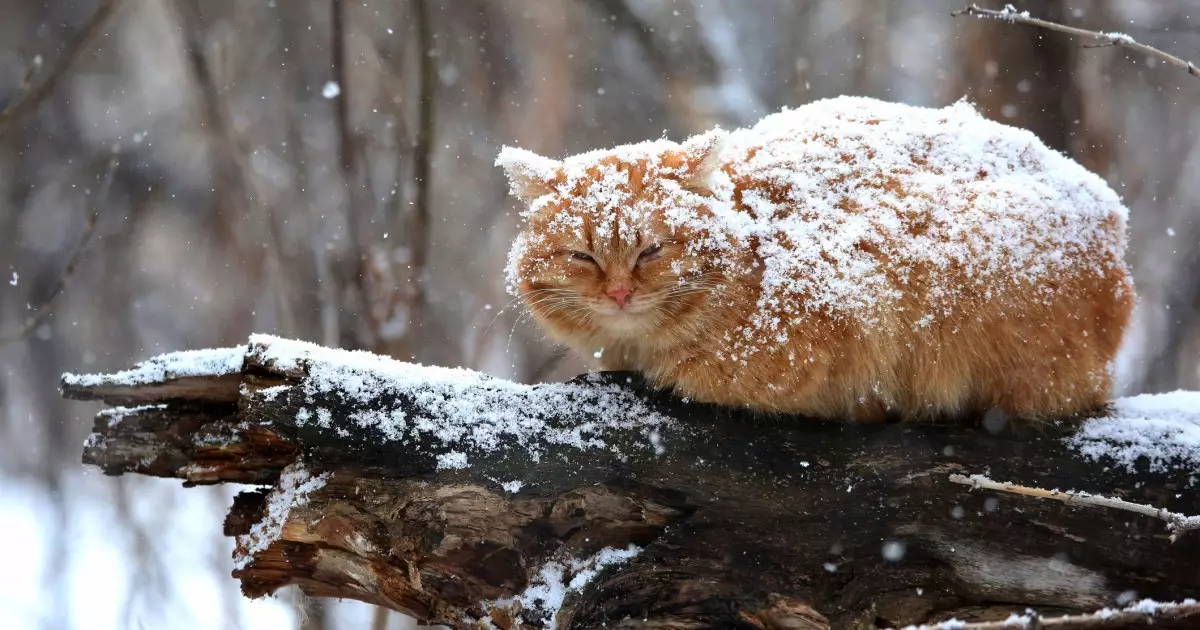As the chill of winter sets in, it’s impossible not to notice the cats that roam the frigid streets and alleyways of our neighborhoods. Some of these are feral cats, while others may be lost pets or animals that have been abandoned. They all share a common struggle: surviving harsh winter conditions. The cold can be particularly dangerous, especially in regions where snow is prevalent. This article aims to provide valuable insights on how we can extend a helping hand to these resilient yet vulnerable felines during the biting cold months.
Cats that find themselves outdoors during the winter months face an uphill battle. While they have some instinctive survival skills, external factors often hinder their ability to thrive. The colder temperatures increase their need for food and shelter, creating a dire situation for many of these animals. The act of seeking warmth and sustenance is not just a luxury; it is a necessity to maintain their health and safety.
Another aspect to consider is that wildlife, like coyotes and other predators, becomes more active in winter as they search for food. This adds a layer of vulnerability for the cats that roam the streets. Thus, the importance of creating a secure and warm environment for these animals cannot be overstated.
Creating a shelter for outdoor cats can be an engaging and fulfilling project. You don’t need to be a craftsman; simplicity often yields the best results. The objective is to provide a dry and insulated space that minimizes exposure to the elements. While some may opt to purchase ready-made shelters, building one can be remarkably cost-effective and fulfilling.
When constructing or selecting a shelter, size is crucial. Contrary to intuition, smaller shelters can keep cats warm more effectively by trapping body heat. For colonies comprising multiple cats, design shelters that can accommodate groups of three to five cats. Another practical tip is to raise the shelter above ground to avoid moisture and preserve warmth.
It’s advisable to place shelters in sheltered areas away from heavy foot traffic and vehicles. To maximize safety, entrances should be narrow, allowing only cats to enter and exit, therefore limiting the possibility of larger predators gaining access.
Nutrition is another critical factor to consider when helping outdoor cats. Cold weather drastically increases their caloric needs as they expend energy to maintain body temperature. Consequently, it is vital to provide more food or increase feeding frequency.
Setting up a feeding station separate from the shelter is highly effective. This station should ideally have a roof to protect the food from rain or snow, and it should also be raised off the ground. Dry cat food is preferable as it does not freeze easily, while wet food can be easier for the cats to digest. However, the key is to ensure that the food remains palatable and accessible.
Water is just as important as food, but it can freeze quickly in cold weather. To counteract this, consider using specially designed heated bowls, or choose dark-colored and thick plastic bowls to help retain warmth. Placing water bowls slightly away from the feeding area can help prevent spills that could leave them without a sufficient water source.
While it may seem counterintuitive to trap cats in winter, this is an opportune time to address the issue of overpopulation. Stray cats are capable of reproducing rapidly, which can lead to a significant number of kittens each spring. Spaying or neutering these cats can help mitigate the proliferation of homeless kittens.
Setting traps should be done in a calm environment to avoid distress among the cats. Choose locations that are sheltered and away from the feeding stations. When trapping, place soft bedding and use bait that will entice cats without scaring them away.
In addition, using magnetic vent covers rather than newspapers can prevent unnecessary fright caused by flapping materials in the wind. Maintaining a sense of security during the trapping process is essential to ensure success.
Caring for outdoor cats during the winter is an act of kindness that enriches not only the lives of the felines in your community but also the community itself. By providing shelter, adequate food, and responsible trapping for spaying or neutering, you are taking proactive steps to ensure their survival amidst harsh conditions. With a little effort, you can make a meaningful difference in the lives of these often-overlooked animals, ensuring that they have the warmth and nutrition they need to thrive even in the coldest months.


Leave a Reply